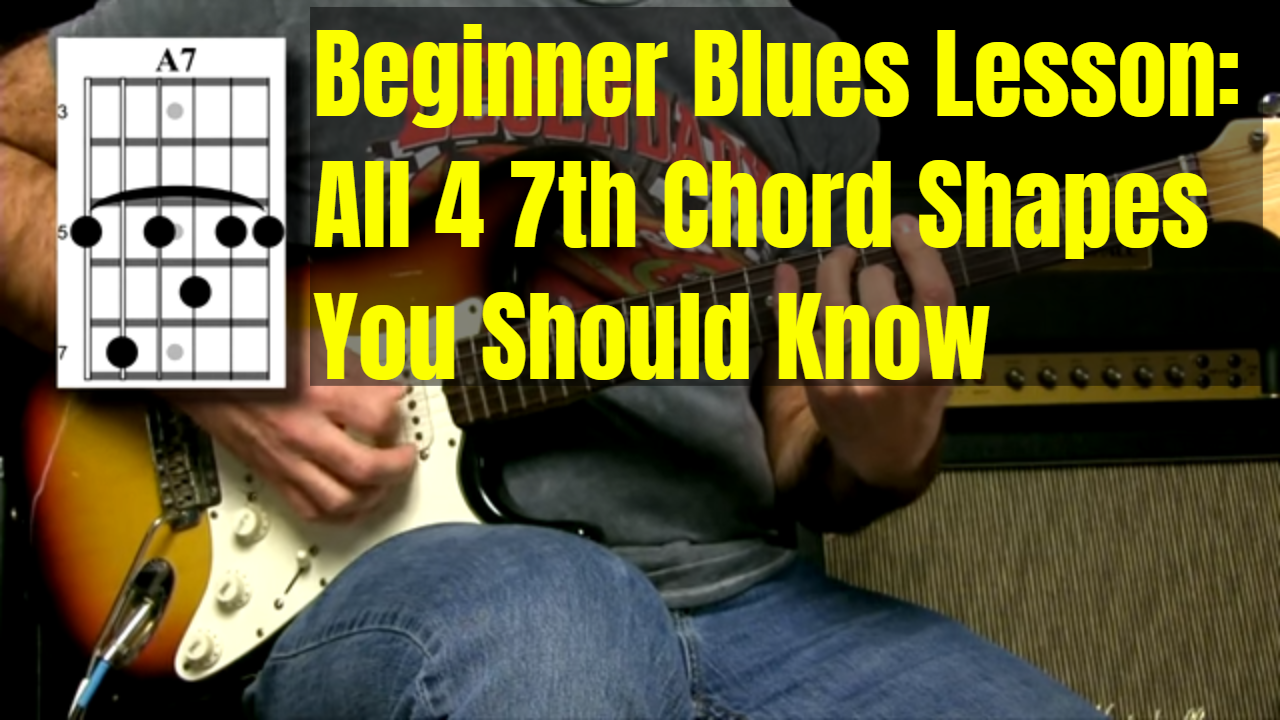Today is more for the beginners…
The blues typically revolves around 7th chords… not major 7th, and no minor 7th, but dominant 7th chords.
Those chords can come in a few different shapes and sizes, but there are some basics that you really should know, and that’s today’s video.

18 replies to "The 4 7th Chord Shapes You Should Know"
It’s easy to get in a rut when comping, so for me, as an intermediate player just practicing with backing tracks, a lesson like this keeps me from ossifying.
Once again, cool stuff!
I had forgotten about the 4th string chord shape so thanks for the reminder and I’m planning to use it in the next band practice.
Griff, thank you for the new chord shapes. Especially the last two, since barre chords are tough with my funky fingers. One really great improvement would be a small tab link.
I think your new video on rhythm is great, but not sure what to focus on.
Thanks Griff and commentary I now know five 7th chord shapes
ha ha, loved the intro to Bayou Country. I am a big Creedence fan. Thanks Griff
I thought of a fourth we commonly use to play the Ukulele. (Please hold the jokes). Grab the 4 top strings at one fret…let’s just say fret 2 and you have Am7, put one finger on fret 3 of string 1 and you have A7. You can play all 5 or 6 strings with A7, but if you move it you have to JUST play the top 4, 1-4. Maybe I missed it, but I thought it wasn’t in the video. Great job, as always Griff!
Amazing the G shape 7th. chord is the easiest for me and the one I prefer. As a matter of fact I find the bar chords easier than the open chords. May be a hangover from after 50+ years away from the guitar.
Question on the D7 with 5th string root. Since we’re playing an A on the high E string (5th fret on high E), is it wrong to use index finger across all 6 strings, including the A on the low E string?
I’ve struggled with getting the right position where my index finger mutes the low E…the problem is mainly my pinky which lacks some flexibility due to an injury.
I was discouraged because it’s a chord shape in the very first lesson of BGU 2.0…to keep going, I just decided to bar all 6 strings with index figure. I can easily switch from A7 to D7 and E7 this way
The downside is that you’ll get some over-ring from holding strings that you really don’t want to hear. In the long run, it’s best to not push on strings you don’t want to hear, but instead to mute them by touching them lightly, as I show in the video above. And while barre chords come up early in BGU, notice that they don’t last… you just need to know them and how they work, you will rarely play them completely.
The first seventh chord I learned just uses the top 4 strings; for instance an A7 where you bar the top four strings on 2nd fret and the top string on the third fret. This 7th is also moveable up and down the fretboard.
Absolutely good stuff. Still adding to chord arsenal.
Why don’t you include the top four string 7th chord that’s like the open G7 and slide it up. On the second fret, it was the first A7th that I learned.
Because that’s unusual to play. You certainly can, of course, but I was trying to go with a more common set here.
I use the ‘top 4 string’ 7th chord a lot at all frets. Gives a different vibe in some places.
Great video, always looking for more tools for my bag of tricks!
Very helpful, Need more chord videos like this for blues. Thanks
Thanks~ good vid